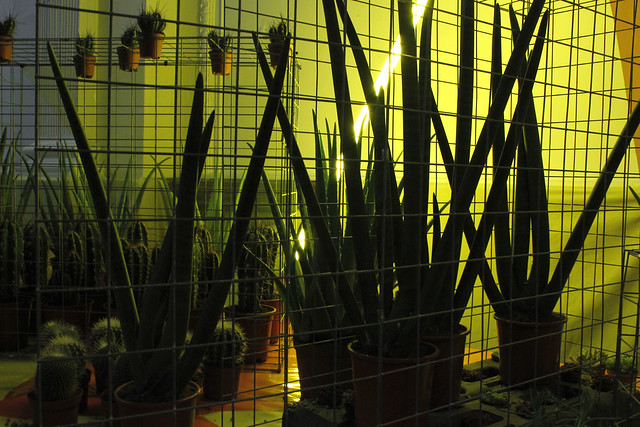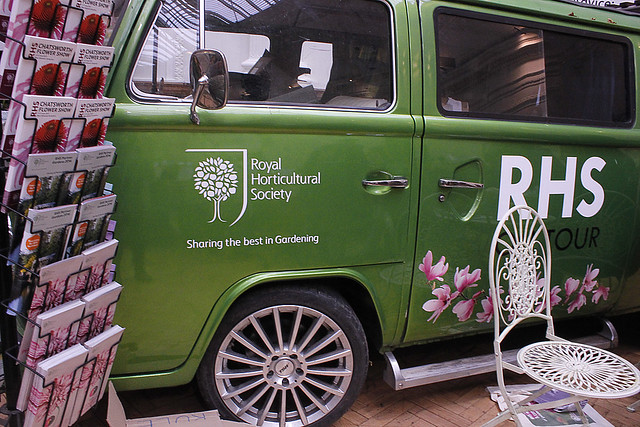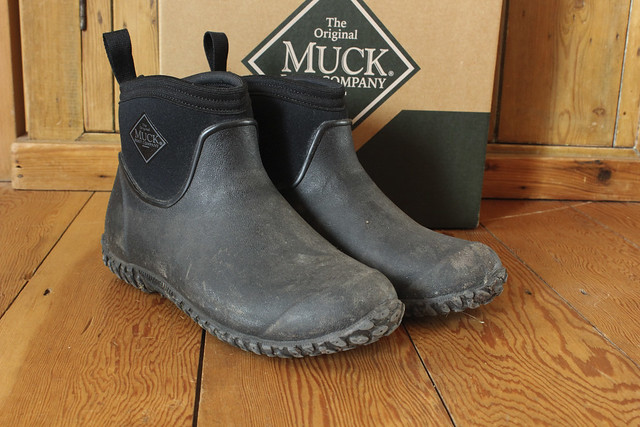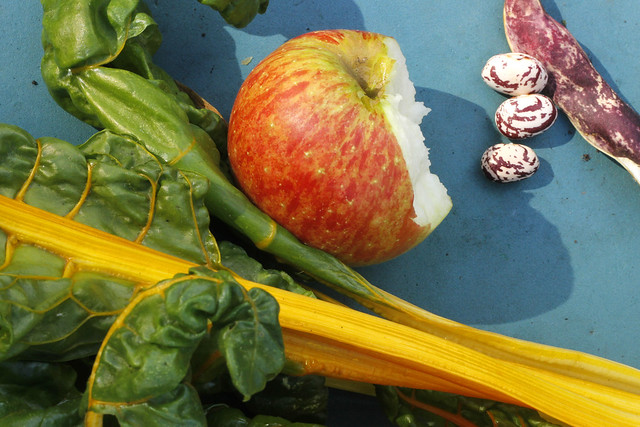21 Nov 2016
A glimpse of the Chiltern Hills
What would make your perfect weekend? There's always something calling for my attention so the ideal weekend for me is when I make time to step away from normal life and enjoy something different.
It's not often that a few days come together as faultlessly as they did on the weekend before last. For a start I had a free Friday (always a good start). I planned three days of bliss with one day of gardening, one day at an RHS show and Sunday walking in the Oxfordshire countryside with family. With sun:rain:sun weather, I couldn't have wished for better.
Labels:
Chiltern Hills,
walk,
woodland
Posted by
Caro
at
10:34
17 Nov 2016
RHS London Urban Garden Show 2016
Hoping that the weather forecast was accurate for the weekend, on my agenda for a very wet Saturday was the new Urban Garden show from RHS London. What's that? A gardener hoping for a wet Saturday? I had my reasons; I wanted to get along to the show without having to choose between indoors or outside. The pull to be outside on a sunny day is strong.
As you all know, I do love a gardening show, especially when it's new. It's good news to see the London shows being extended again with this new addition for small space gardeners. (The early summer Rose Show was added in 2015.) We've recently had the Harvest Festival and Shades of Autumn shows at either end of October, the Christmas Show is still to come (17th/18th December) and now the Urban Garden Show has been sandwiched into November. The RHS Westminster shows that I've been to in the past have allocated a lot of space for the usual retailers and plant displays, with (I'm sorry to say) an uninspiring small café area squeezed into the gallery. Would this one be any different? Happily, yes, I believe so; indications are good. The plant displays were still much in evidence - amazing cactus and tropical plant installations by Cityscapes (see top photo), styled by garden designers Jarman Murphy - and a new host of retailers too. Entrance to the show was by navigating a path through a tropical jungle of potted plants, creating a contemporary ambience which matched the theme of urban and indoor gardens.
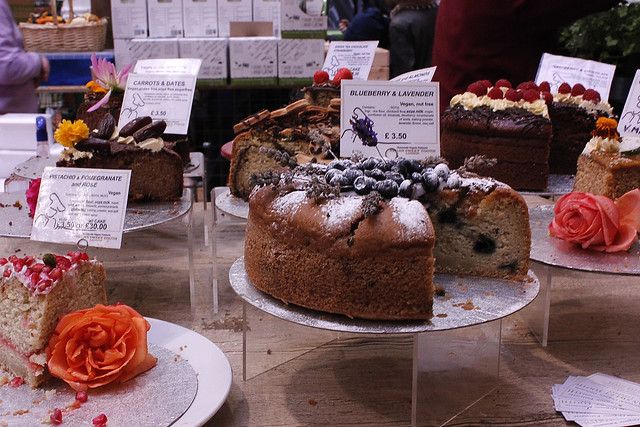 |
| Cakes with fruit, veg, flowers and herbs ... |
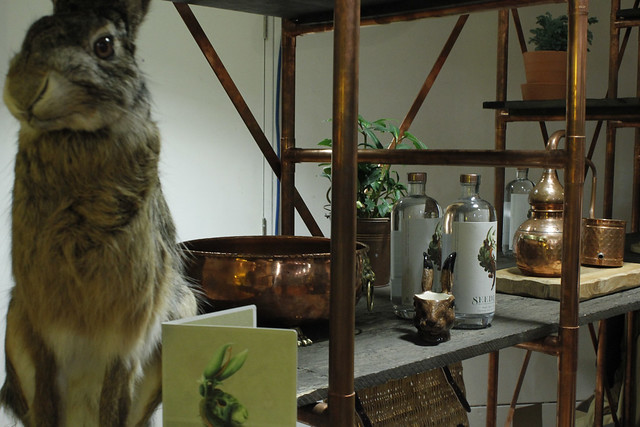 |
| Surprisingly delicious non alcoholic spirits from Seedlip. The bunny approves. |
Reluctantly leaving the cake and delicious eats to one side for the moment, the show was all about encouraging and inspiring people to garden, even if space allows for just the one tiny plant. Preferably stylish and in a funky pot or glass bauble. That might sound a tad cynical but actually the show was visually rather exciting. Smaller, nicely understated and with lots of really good artisan eats (vegan or otherwise) and drinks on offer and, crucially, the space to comfortably take a seat and enjoy your food. We gardeners like to linger over a cup of tea and a good slice of cake.
 |
| A cactus retailer named Prick seemed very popular! |
The show would have been sadly lacking if it was only about shopping but there was also an excellent programme of talks and workshops - and advice from the RHS On The Road campervan. There was a very tempting sounding 'behind the scenes' tour of the Lindley Library exhibition 'The City Gardener' but, silly me, I stupidly didn't realise that it had to be booked in advance; disappointment levels were high and lessons learned. This time all went to plan as I got to the show in time for 'Green is the new Black', an illustrated talk on the relationship between fashion, culture and gardening. The talk was by Tom Loxley, the editor of Rakes Progress, a new contemporary gardening magazine. His take on the upsurge of interest from a younger generation of would-be gardeners was interesting and I was able, like many at the show, to have a further chat to him afterwards. His words had put thoughts into my head and afterwards I noticed that there seemed to be a lot of twenty-somethings wandering the hall, engrossed in plants. It seemed everyone wanted to take home a cactus or Hippeastrum.
I didn't have time to attend any of the craft workshops but serendipitously bumped into a friend who was proudly showing the two macramé holders that she'd just made at Grace + Thorn's workshop. Apparently, they're the latest trend for household plants. I might have to rescue the ones I made in the 80s from my mother's house!
I would have liked to return to the show on Sunday to take a look at workshops on making flower crowns and botanical jewellery, kokedama and succulent frames plus talks on the benefits of a plant based diet, maximising space for food growing and successfully growing indoor plants. I've heard this show is a trial run but I also overheard people remarking on the success of the event - I hope the RHS feels the same way and will be back with this show again next year. It could just inspire a whole new generation of urban and small space gardeners - and it was great that the show tapped into the trend for healthy plant based food and drinks.
Labels:
RHS,
RHS show,
Urban Garden Show
Posted by
Caro
at
00:01
8 Nov 2016
On autumn days like these ...
At this time of year my inner bear wants to start hibernating. With sunset currently at around 4.15, even after the clocks have been returned to Greenwich Meantime, there's very little gardening that can be done after dark. Maybe I'm being shortsighted and should be potting up seedlings by candlelight in a greenhouse or digging by the light of a few well placed torches. Or maybe not. It's tempting to get bogged down emotionally by the shortened days, darker evenings and damp misty mornings which, for those having to go out and earn a crust during the week, means less gardening. Throw in a few rain soaked weekends and it's enough to bring on a severe case of the glums. But, just occasionally, we're given a gift from the gods of a perfect autumn day (or morning) and we've had a few of those this past week. I woke up to another of those days on Sunday which meant I could get work done in the garden and allotment. A slight "WooHoo!" moment ensued as I opened the blinds, even though it was quite chilly outside. By mid-afternoon the rains came down and I returned home, unused strimmer in hand, soaked through. Welcome to the British autumn.
But even a short burst of blue skies is enough to put a smile on my face; the colours of autumn on a sunny day make me want to reach for my paintbox. One day last week, I think it was Wednesday, I was wandering around the neighbourhood marvelling at all the berries and fabulous autumn colour against a blue, blue sky. On days like these, it can take me a long time to get where I'm supposed to be going as I'm dragging my iphone out to take pictures every couple of steps. Yes, even in London. Or, perhaps, especially in London (or any urban sprawl) where splashes of autumnal colour can alleviate the city monotones of concrete, glass, metal and tarmac.
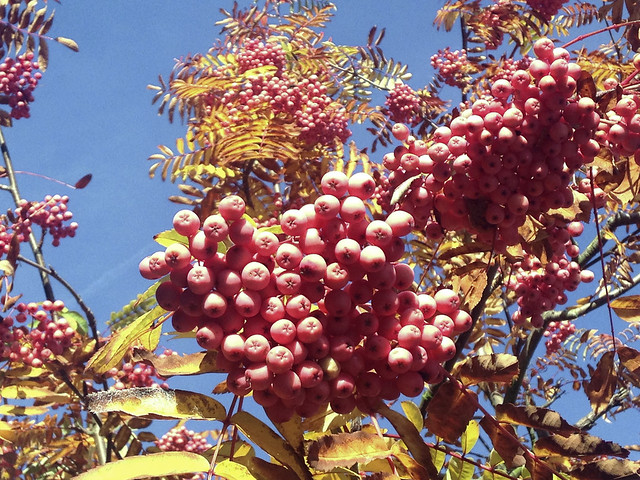
Splashes of colour are mostly seen in private gardens or from street planting - Hampstead Heath is still mostly green and gold although there are lots of berries. At home, there's coppery gold seen from my window as an ornamental cherry loses its leaves but, in the veg patch, the strawberry leaves and pineapple sage flowers win the day. (Which reminds me, I must have a look to see what else is still flowering.)
And while autumn slowly tightens its grip on nature, I'm whiling away the darker evenings with planning for next year and some crafting: painting a new seed box, twisting gathered creeper stems into quick wreaths and knitting an essential pair of fingerless gloves. And there's always reading; has anyone got any recommendations for a good page-turner? I'm currently reading 'An Orchard Odyssey' by Naomi Slade; part story, part reference, excellent read for any fruit grower and inspiration for wannabe fruitarians. I'll be reviewing it soon here.
There was frost on the rooftops this morning for the first time. I wonder if this is going to be a harder winter than last year? I can't remember seeing frost this early in November in London in recent years. I don't mind frost but it would nice if we didn't get the winter storms of last year. Let me leave you with a few warming moments on this chilly day.
And, finally, I'm in awe of this sumach tree (Rhus typhina) - could there be anything more beautiful? It reminds me of a woodblocked Indian print.
Posted by
Caro
at
09:28
26 Oct 2016
Five practical reasons why Muckster boots are the best (imho)
Disclosure - the boots in this review were gifted to me by the Muck Boot company for review. As ever, my reviews are an honest reflection of my opinions and experience of the product.
A good pair of wellies (rubber boots) can fulfil many functions - for dancing at a summer festival, running through the rain or, like Meghan Markle, stylish footwear for welly wanging in New Zealand! As a gardener, my needs are more practical. In all these cases, Muck Boots could fit the bill. Here's why.
Earlier this year I was sent a pair of wellies to try out. Naturally, as a gardener, this was a thrilling prospect as my old and very loved pair had been pushed into service one season too many and had cracked along the seam where my foot bends, allowing the elements access to my socks. Nothing worse than wet socks on a cold day, even if the ancient but beloved wellies had a cool Orly Kiely designer print.
I loved those old wellies so completely that I seriously considered trying to fix them with a tent repair kit (as you do) but somehow never got around to it. So they sat at the bottom of a cupboard for the past few years while I searched for a suitable replacement.
I was sent the ankle boots (the boots are also available with a taller leg) which are better for movement than my previous knee high rubber wellies; I'm tempted to buy a taller pair of Muck Boots for winter as the uppers are made of flexible neoprene and therefore fabulous for the walker's calves that I've been blessed with. As soon as I slipped them on I was won over. Oooh, so comfy. They have a shock absorbing inner sole, flex-foam insulation and breathable air mesh lining - which all adds up to all day comfort. This has been a boon time and again since I've been known to garden for eight hours without a break, especially up at the allotment, and my feet were just as fresh and perky at the end of the day as at the start.
Speaking of which, during their recent tour of New Zealand, the media noticed that Meghan Markle and her husband, Prince Harry, both wore Muck Boots. Need I say more?
December 2021: I originally wrote this review in October 2016 and, just to let y'all know, they're still in daily use! Over the past five years, I've regularly gardened and walked in them in all weathers, and still find them comfy, waterproof and, as already mentioned ~ahem~ stylish. (Maybe not so much that last one.) They're still going strong - no signs of wearing out any time soon.
I saw this tree the other day and thought it would make an excellent boot scraper; tiny problem, it's not near my home.
Luckily, I've since discovered a marvellous piece of kit for boot cleaning - simple and effective, I've been trying out the Mudbuster. It's basically a one-size fits all footwell with plastic spikes - fill with water, stick your boot in, do a little dance around on the spot and the mat does the work of cleaning for you - sides as well as soles. Brilliant. I wish I'd had this when my son was younger and played football every weekend; on the other hand, I think it could still be very useful for post-festival trainers (as well as gardening!). Not for me, I hasten to add, but for my festival going son - you can see from this photo that one size fits all!
My thanks to the Original Muck Boot Company who gave me a pair of RHS Endorsed Muckster II ankle boots to review. They are available from the company's website here.
My thanks also to Pennine Manufacturing who kindly sent me a Mudbuster to try out. Mudbusters can be ordered direct from Pennine via the phone number on the website or email sseddon@pennineindustries.com The unit retails at £10.99.
You Tube video of Mudbuster mats in action here.
A good pair of wellies (rubber boots) can fulfil many functions - for dancing at a summer festival, running through the rain or, like Meghan Markle, stylish footwear for welly wanging in New Zealand! As a gardener, my needs are more practical. In all these cases, Muck Boots could fit the bill. Here's why.
Earlier this year I was sent a pair of wellies to try out. Naturally, as a gardener, this was a thrilling prospect as my old and very loved pair had been pushed into service one season too many and had cracked along the seam where my foot bends, allowing the elements access to my socks. Nothing worse than wet socks on a cold day, even if the ancient but beloved wellies had a cool Orly Kiely designer print.
I loved those old wellies so completely that I seriously considered trying to fix them with a tent repair kit (as you do) but somehow never got around to it. So they sat at the bottom of a cupboard for the past few years while I searched for a suitable replacement.
Warm
Top of the agenda for a new pair, after the cost factor, was a neoprene lining. Why? Because, as with wetsuits, neoprene will keep your tootsies (and other extremities) warm and dry regardless of the weather. I'd discovered this as my old pair had a gorgeous orange neoprene lining. Mmmm, cozy, even in snow and ice.Comfortable
The new pair had to be comfy too, without one of those silly and impractical heels, with a non slip sole and fit for purpose. Enter the Muck Boot. I'd given serious thought to these a couple of years ago - yes, the search has been that long - but convinced myself these were for mucking out (makes sense, no?), i.e. the horsey brigade. But now several styles have been endorsed by the RHS which puts them firmly into gardening territory and very well they fit there too.I was sent the ankle boots (the boots are also available with a taller leg) which are better for movement than my previous knee high rubber wellies; I'm tempted to buy a taller pair of Muck Boots for winter as the uppers are made of flexible neoprene and therefore fabulous for the walker's calves that I've been blessed with. As soon as I slipped them on I was won over. Oooh, so comfy. They have a shock absorbing inner sole, flex-foam insulation and breathable air mesh lining - which all adds up to all day comfort. This has been a boon time and again since I've been known to garden for eight hours without a break, especially up at the allotment, and my feet were just as fresh and perky at the end of the day as at the start.
Lightweight
They're lightweight as well, something I'm grateful for when I've been on my feet for a while. In fact one day I forgot I was wearing them and went straight from the allotment to the supermarket. Hey, colour me stylish.Speaking of which, during their recent tour of New Zealand, the media noticed that Meghan Markle and her husband, Prince Harry, both wore Muck Boots. Need I say more?
Reliably waterproof
I put the boots through their paces on a long country walk up in the Chiltern Hills, accessed by a very muddy bridle path. In a dry summer this wouldn't have been a problem but it had been raining heavily the day before. In some places the only options were to slither up the bank or squelch through inches of wet mud. These are situations where the boots coped splendidly; yes, they were caked in sticky mud but my feet and, more importantly, socks were dry and I simply hosed the boots down at the end of the walk as they're entirely waterproof.Self cleaning and non slip soles
The boots are marketed as having a 'self cleaning and high traction outsole'. The high traction I can attest to but I found that the claim to self-clean worked only in part. After a day digging on my enriched but clay-based soil, I felt the need to pop the boots into a bag for storage as there were remaining bits of mud embedded in the sole, even after a short walk home. Okay, so that was on days when I didn't rinse them at the end of the day - who does? In the time honoured tradition, I took them off at the door and left them there.December 2021: I originally wrote this review in October 2016 and, just to let y'all know, they're still in daily use! Over the past five years, I've regularly gardened and walked in them in all weathers, and still find them comfy, waterproof and, as already mentioned ~ahem~ stylish. (Maybe not so much that last one.) They're still going strong - no signs of wearing out any time soon.
And that's when having a fantastic boot scraper comes in handy!
I saw this tree the other day and thought it would make an excellent boot scraper; tiny problem, it's not near my home.
Luckily, I've since discovered a marvellous piece of kit for boot cleaning - simple and effective, I've been trying out the Mudbuster. It's basically a one-size fits all footwell with plastic spikes - fill with water, stick your boot in, do a little dance around on the spot and the mat does the work of cleaning for you - sides as well as soles. Brilliant. I wish I'd had this when my son was younger and played football every weekend; on the other hand, I think it could still be very useful for post-festival trainers (as well as gardening!). Not for me, I hasten to add, but for my festival going son - you can see from this photo that one size fits all!
My thanks to the Original Muck Boot Company who gave me a pair of RHS Endorsed Muckster II ankle boots to review. They are available from the company's website here.
My thanks also to Pennine Manufacturing who kindly sent me a Mudbuster to try out. Mudbusters can be ordered direct from Pennine via the phone number on the website or email sseddon@pennineindustries.com The unit retails at £10.99.
You Tube video of Mudbuster mats in action here.
Labels:
Essential tools,
garden wellies
Posted by
Caro
at
17:00
9 Oct 2016
#UpandAutumn
... to borrow a hashtag phrase which I keep seeing on Twitter. I love it, it's so appropriate, especially given the sunny weather we've had this week to start the season off. There's nothing quite like blue skies to make me feel motivated and now is not the time to start slacking off in the garden. (I've done enough of that already this summer!)
There's bulbs to plant. I have a large basket full waiting to be planted; alliums, daffodils, snowdrops and crocuses can go in now so that they have a chance to develop roots while the soil is still warm - that's particularly true of alliums - and I also have about 250 tulip bulbs which I'll plant next month when it's a bit colder. That's nowhere near the thousands of bulbs that are planted in public gardens but I know my limitations - kneeling pads, restorative yoga and Deep Heat at the ready.
Every year I add to the previous year's tulips; I never lift the bulbs when they've finished flowering but nip off the flowering stalk and wait for the leaves to die back. Most of the bulbs have proved reliably perennial so far - fingers crossed for this year as well, although realistically they'll be less vigorous year on year. Bargains are a necessity as my work in the communal gardens here is not funded. This year, I'm very taken with 'Sherbet' bulbs from Morrison's supermarket. I grew them last year and there were some absolute beauties in the mix. I paid £2 per bag of 12 which I think is quite good, even with no budget to speak of.
Another job waiting for my attention is the planting of several grasses in the middle garden. Remember that space? Yep, big plans, not enough time. It's mostly been used as a holding/nursery area for plants this year while I flesh out a plan and watch how the light falls across the garden throughout the year. As luck would have it, I collected a car load of plants from the T2 tea collaboration with Rich Landscapes last week and autumn is a good time to plant perennials. I'm hoping to dedicate a large part of my weekend to weeding, planting and pruning; it's much needed.
The veg patch is ticking over at the moment. Braeburn apples have ripened and are, amazingly (touch wood), still on the tree. I usually pick one a day to munch on. A few pears need to be picked and ripened indoors and, huge excitement, I've got five quinces ripening! This is a first and I'm really looking forward to cooking with those - or even just being able to smell the famous perfumed quince at last.
Borlotti beans have coloured up beautifully and are now an astonishingly vibrant red. I don't know yet what they taste like as I'm saving any ripened pods until I have enough to cook with. Likewise with the tomatoes. Remember my despair a few weeks back? I needn't have panicked, I now have bowls of beautiful yellow plum shaped tomatoes - and no sign of blight. I'm still going to choose my tomato seeds with better care next year though. It's worth noting that Banana Legs (the yellow plum tomatoes) were prolific, each fruit 2 to 3 inches long and each plant growing several clusters of 5 to 6 fruits. I bought the seeds from Pennard Plants at one of the early RHS shows.
I've still got to plant out Cavolo and curly kale but it's a question of where? The patch is still stuffed with chard, beetroot (small leaves of both excellent in salads), broccoli, rhubarb and radishes that I'm letting flower so I can try the pods - supposedly a restaurant delicacy, don't you know!
And then there's seed saving ... and sowing for next year's annuals ... and mulching ... and, and, and. Onwards, always onwards.
There's bulbs to plant. I have a large basket full waiting to be planted; alliums, daffodils, snowdrops and crocuses can go in now so that they have a chance to develop roots while the soil is still warm - that's particularly true of alliums - and I also have about 250 tulip bulbs which I'll plant next month when it's a bit colder. That's nowhere near the thousands of bulbs that are planted in public gardens but I know my limitations - kneeling pads, restorative yoga and Deep Heat at the ready.
Every year I add to the previous year's tulips; I never lift the bulbs when they've finished flowering but nip off the flowering stalk and wait for the leaves to die back. Most of the bulbs have proved reliably perennial so far - fingers crossed for this year as well, although realistically they'll be less vigorous year on year. Bargains are a necessity as my work in the communal gardens here is not funded. This year, I'm very taken with 'Sherbet' bulbs from Morrison's supermarket. I grew them last year and there were some absolute beauties in the mix. I paid £2 per bag of 12 which I think is quite good, even with no budget to speak of.
Another job waiting for my attention is the planting of several grasses in the middle garden. Remember that space? Yep, big plans, not enough time. It's mostly been used as a holding/nursery area for plants this year while I flesh out a plan and watch how the light falls across the garden throughout the year. As luck would have it, I collected a car load of plants from the T2 tea collaboration with Rich Landscapes last week and autumn is a good time to plant perennials. I'm hoping to dedicate a large part of my weekend to weeding, planting and pruning; it's much needed.
The veg patch is ticking over at the moment. Braeburn apples have ripened and are, amazingly (touch wood), still on the tree. I usually pick one a day to munch on. A few pears need to be picked and ripened indoors and, huge excitement, I've got five quinces ripening! This is a first and I'm really looking forward to cooking with those - or even just being able to smell the famous perfumed quince at last.
Borlotti beans have coloured up beautifully and are now an astonishingly vibrant red. I don't know yet what they taste like as I'm saving any ripened pods until I have enough to cook with. Likewise with the tomatoes. Remember my despair a few weeks back? I needn't have panicked, I now have bowls of beautiful yellow plum shaped tomatoes - and no sign of blight. I'm still going to choose my tomato seeds with better care next year though. It's worth noting that Banana Legs (the yellow plum tomatoes) were prolific, each fruit 2 to 3 inches long and each plant growing several clusters of 5 to 6 fruits. I bought the seeds from Pennard Plants at one of the early RHS shows.
I've still got to plant out Cavolo and curly kale but it's a question of where? The patch is still stuffed with chard, beetroot (small leaves of both excellent in salads), broccoli, rhubarb and radishes that I'm letting flower so I can try the pods - supposedly a restaurant delicacy, don't you know!
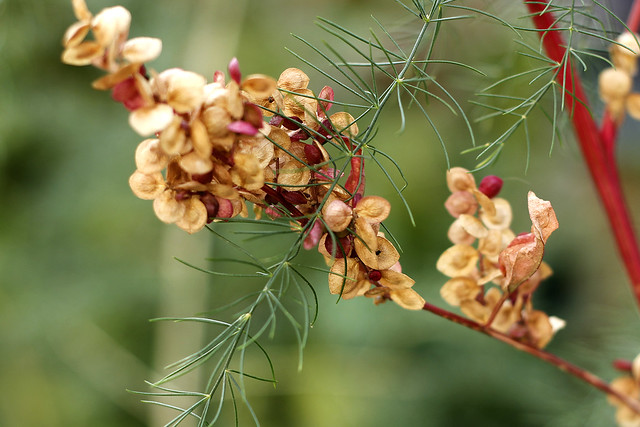 |
| ~Orache (Atriplex rubra) aka Mountain Spinach and Fennel - both self seed enthusiastically at this time. ~ |
And then there's seed saving ... and sowing for next year's annuals ... and mulching ... and, and, and. Onwards, always onwards.
Like I say, up and at 'em.
1 Oct 2016
Sweet peas all summer
I often forget to sow sweet peas, either completely or until it's rather too late but, last winter, I remembered. In an exercise to rid my seedbox of outdated seeds, I came across a random selection of sweet pea seeds. A few were odd seeds at the bottom of the packet, others were facing or past their best before date (not that that seems to matter much). With all these leftovers, I reckoned that I'd nothing to lose with a December sowing; after all, it wouldn't matter if they didn't germinate or grow as there would be time in the spring to sow again with fresh seed.
Contrary to my expectations, they did grow and I picked my first bunch for an Instagram photo on 5th June. All through June, July and August I enjoyed the heady evening scent of prolific sweet peas in the garden. I couldn't believe that they would flower for 3 months from one sowing and I became determined that they'd still be flowering at the end of August. That involved a lot of deadheading, let me tell you!
 | |
|
By the first week in September I was ready to let them finish their botanical journey and make seedpods so I stopped deadheading. By mid-September I found a dried seed pod among the still blooming stems ... and today, the last day of September, I picked the last tiny bunch of flowers. Four months of flowers! Incredible. (At least that's the way it seems to me. Is this lengthy flowering usual?) I'd like to claim that it was my prowess as a gardener that achieved this (hohoho) but, realistically, I like to think anyone could do the same. There are a few key points however and this is what I did:
1. Start your seedlings early. Sweet peas for next year can be sown at any time now and left in a sheltered place, eg, cold frame, greenhouse or cloche. Depending on your location and the weather, they may need additional protection if the winter is harsh and you're growing north of, say, Milton Keynes. (Mine survived last year's relatively mild winter on my balcony with no added protection. This year I think I'll put them in my friend's greenhouse.)
2. Sow into deep pots. I put 3 or 4 seeds into each 10cm diameter deep pot (deep root trainers are also ideal) and placed the pots on a shelf on my tiny sheltered balcony. Amazingly, I had 80 - 100% germination in each pot and, bar a tiny amount of watering, largely left the seedlings to get on with it.
3. Keep an eye on the plants. By February I needed to pinch out the tops to stop them getting leggy. My balcony is part shaded on three sides so the plants had a tendency to grow towards the light. Pinching out the tops above the first four sets of true leaves also helps the plants to bush out.
4. Plant out from mid-April (if possible). I had other distractions so mine went outside in early May. I planted the seedlings without separating them to minimise root disturbance. At four to a pot that's not ideal but they had plenty of room to grow once planted; each cluster of seedlings was about 40cm from its neighbour. I added a small amount of blood, fish and bone to the planting holes, mixed this in with the soil and bunged the whole potful of seedlings into the prepared hole. Each plant was tied in to the prepared trellis and the row watered well.
5. Water, water, water. I made sure to prioritise watering the sweet peas so that the soil stayed moist. I also gave them a very occasional boost with some diluted home-made comfrey feed. And I tried to aim for the roots to keep the leaves dry. (The wet spring/summer helped as well, I'm sure.)
6. Support and encourage. I tied them in as they grew (actually, it was my neighbour who helps who did that) and we both kept on top of regular deadheading and watering. As soon as the each bloom started to fade, it were cut back to the base of its stem to encourage more flowers.
7. Label and save. As these plants did so well, I'm keen to save the seed for next year. The plants tended to twine around and through each other as they grew up the trellis. Stupidly, I didn't label the stems so, now that I'm saving the seed pods, I have no idea which sweet pea I'll get when I sow those seeds - it will be a nice surprise!
I had some beautiful variations in the flowers as the summer wore on and suspect this might be due to cross pollination. Has anyone else found this? In a one and a half metre row, I was growing purple/black, white, lavender, pale pink plus shades of bright pink and shades of purple (Chiltern Seeds 'Summer Sizzler' and 'Flamenco Mix', my favourites and sent to me by the very kind Flighty). I'm hoping that those variations will appear in next year's flowers because the challenge now is to sow the seeds that I've saved and see if I can create a repeat performance.
Update: I forgot to mention that all but the very dark flowers had ridiculously long stems as well - so long that I got the tape measure out more than once - and the longest was 16" !!
How did everyone else do with their sweet peas this year? Did my plants do well or was this a universal trend? And who's started next year's annuals off already? (I have to do mine this weekend!)
 |
| ~ a few photos taken in August ~ |
Labels:
Sweet Peas
Posted by
Caro
at
09:47
Subscribe to:
Posts (Atom)


